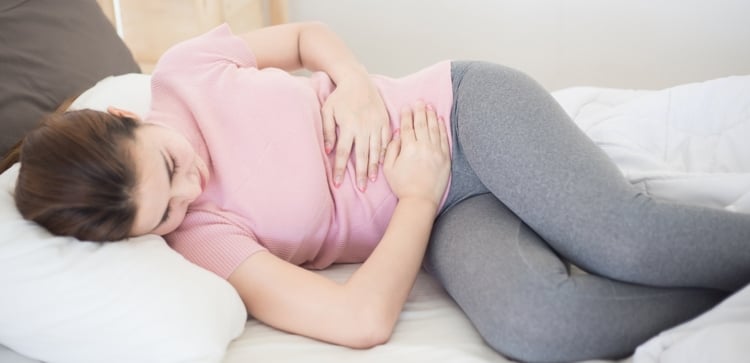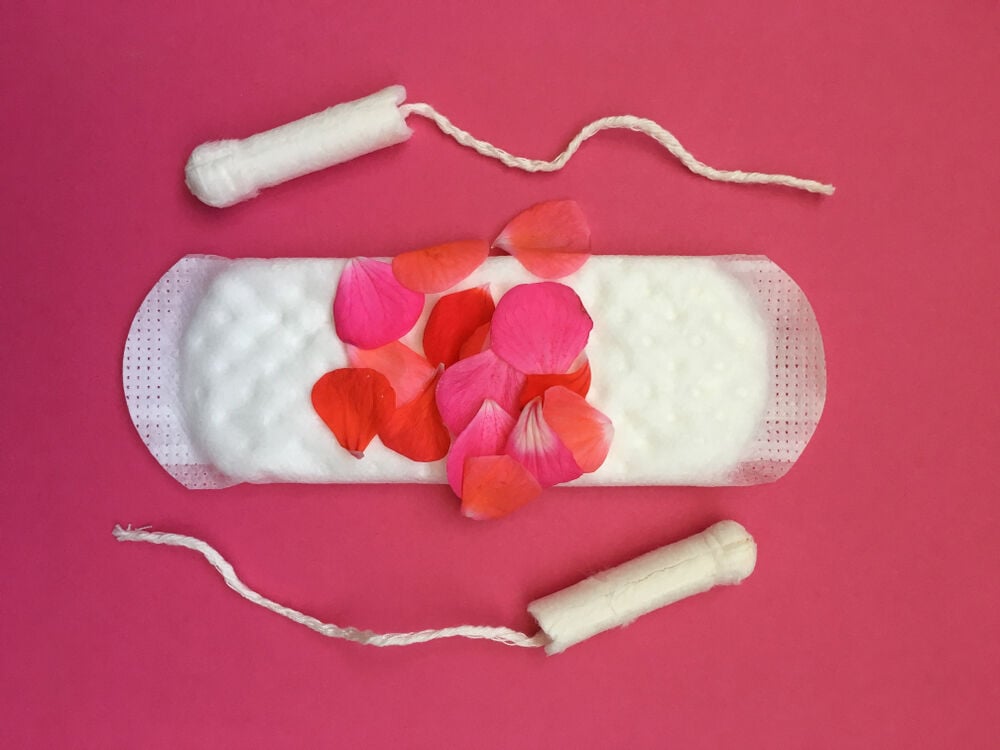Several days before your period, you may experience cramps that can be really intense and not the same as the normal menstrual cramps. What can eventually cause them?
-
Tracking cycle
-
Getting pregnant
-
Pregnancy
-
Help Center
-
Flo for Partners
-
Anonymous Mode
-
Flo app reviews
-
Flo Premium New
-
Secret Chats New
-
Symptom Checker New
-
Your cycle
-
Health 360°
-
Getting pregnant
-
Pregnancy
-
Being a mom
-
LGBTQ+
-
Quizzes
-
Ovulation calculator
-
hCG calculator
-
Pregnancy test calculator
-
Menstrual cycle calculator
-
Period calculator
-
Implantation calculator
-
Pregnancy weeks to months calculator
-
Pregnancy due date calculator
-
IVF and FET due date calculator
-
Due date calculator by ultrasound
-
Medical Affairs
-
Science & Research
-
Pass It On Project New
-
Privacy Portal
-
Press Center
-
Flo Accuracy
-
Careers
-
Contact Us
8 Reasons for Extremely Painful Menstrual Cramps


Every piece of content at Flo Health adheres to the highest editorial standards for language, style, and medical accuracy. To learn what we do to deliver the best health and lifestyle insights to you, check out our content review principles.
What are the origins of menstrual cramps?
Uterus is an organ with muscular layers, and during your period it does a lot of work. Cramps are the way that uterus responds in order to control the bleeding during menstruation. If you are having a lot of menstrual blood or a blood clot, the uterus is actually cramping to expel that.
For some of you, cramps are causing only a slight discomfort. For the others, the painful period cramps can interfere with your daily activities. So, why do period cramps hurt?
Menstrual cramps can be caused by several reasons. Let’s see the most severe of them.
Endometriosis can cause painful cramps
Endometriosis is the abnormal growth of endometrial cells.
Apart from the pain, other symptoms of endometritis include:
- Cyclic pelvic pain
- Bleeding
- Dysmenorrhea
- Dyspareunia (painful intercourse)
- Defecation pain
- Infertility.
Here you can read about the risk factors of endometriosis, how to diagnose, and treat it.
Leiomyoma causes painful cramps
It is the type of most common tumors in females, also known as fibroids. It often presents with multiple discrete tumors. It may be asymptomatic, cause abnormal uterine bleeding, or result in miscarriage. Severe bleeding may lead to iron deficiency anemia.
Adenomyosis - reason for painful cramps
It is the extension of endometrial tissue (glandular) into uterine myometrium caused by hyperplasia of basal layer of endometrium. Its key symptoms are dysmenorrhea, menorrhagia, uniformly enlarged, soft, globular uterus.
Take a quiz
Find out what you can do with our Health Assistant
Pelvic inflammatory disease (PID)
Pelvic inflammatory disease is an infection of the woman’s reproductive organs that is often caused by some sexually transmitted infections like chlamydia, gonorrhea.
Reason for painful cramps: cervical stenosis
The cervix is located between the uterus and the vaginal canal – it opens into the vaginal canal. Cervical stenosis is a condition where the cervix is really narrow and blocks the passage between the uterus and the vaginal canal. It is a genetic condition or it may develop later as a result of other conditions or procedures.
Cervical stenosis causes cramps because the blood finds it hard to pass through and causes painful pressure in the uterus, so it results in lots of cramps.
Reason for painful cramps: uterine defects
Your uterus is formed while you are a female fetus in your mother’s uterus and it is developed from a structure called the paramesonephric ducts. Sometimes, the uterus won’t be formed as it should, which can lead to several things like infertility, painful intercourse, and period pain.
Menstrual cramps are often present and caused by the blockages and membranes diving the uterus and vagina. The most common types of uterine defects include bicornuate uterus (two uteri leading to one cervix), septate uterus (the uterus is normal and it has a fibrous band of tissue bisecting it) and unicornuate uterus (it develops from one paramesonephric duct).
Insertion of a copper IUD can cause cramps
An IUD (intrauterine device) is a T-shaped device that is inserted into the uterus by your doctor. This device is used to prevent pregnancy.
One of the types of these devices is the cooper IUD device that is plastic wrapped in coiled copper. Once inserted, this type of device needs to be replaced every 10 years. The cooper IUD is releasing copper into the uterus, creating an inflammatory response and less friendly environment for the sperms. Cooper IUDs are characterized by heavy bleeding that causes intense cramps in the first six months after insertion.
If you are experiencing symptoms like fever, vomiting, abdominal or pelvic pain, bloody stools - you should seek medical help.
Reason for painful cramps: ectopic pregnancy
The fertilized egg didn’t travel to the uterus to attach to the endometrium of the uterus. Instead, it is attached to the fallopian tube, most often in ampulla, ovarian, isthmus parts, fimbria site of the ovary or cervix.
Very often ectopic pregnancy is mistaken for appendicitis. The symptoms of the ectopic pregnancy are severe pain and bleeding. Shall you develop any of the symptoms, don’t hesitate to address your healthcare provider.
Ectopic pregnancy risk factors:
- Prior ectopic pregnancy
- History of infertility
- Salpingitis
- Ruptured appendix
- Prior tubal surgery.

Possible complications of menstrual cramps
Menstrual cramps won’t cause any other medical complications if you go to see a doctor on time in order to prevent further conditions to occur. It mainly affects your daily activities. Furthermore, if endometriosis is not discovered in time, it may cause fertility problems. The pelvic inflammatory disease can increase the risk of a fertilized egg implanting outside of the uterus,
Home treatment
If you are experiencing painful menstrual cramps, most probably you are asking yourself how to cure period cramps. How do you stop period cramps and is there any period cramps cure?
There are several ways how to cure period cramps. Most of the menstrual cramp cures relate to the healthy lifestyle. You should find effective ways to reduce your stress.
Eat healthy food and hydrate your body with enough fluids, especially water. Try to avoid alcohol, cigarettes, and caffeine. Exercise is the best way to increase blood circulation. Start by doing home stretching, light exercises and walking or biking every day. Make sure that you are having quality sleep at night.
You can check for other ways of reducing the pain caused by the painful menstrual cramps.
When to see a doctor
Have you asked yourself, “Why do my cramps hurt so bad”? If yes, that means that you have noticed that your menstrual cramps are not with the normal strength as usual. This is the first indication that you should go and see your doctor.
Your doctor will ask you about the symptoms that are present in your specific case and menstrual cycles. Your doctor will most probably do a full pelvic exam. The doctor should explain to you how long do menstrual cramps last and if it turns out that your cramps are not caused by your period, you will have to do additional tests to find out the exact reason. When you will discover the right cause of your cramps, your doctor will prescribe you a menstrual cramps cure.
To prevent menstrual cramps from happening, maintain a healthy lifestyle. Choose carefully the food that you are eating, exercise several times in the week and try to walk at least an hour every day. If you are willing to try some new diet or do any treatments, talk to your doctor first.


Hey, I'm Anique
I started using Flo app to track my period and ovulation because we wanted to have a baby.


The Flo app helped me learn about my body and spot ovulation signs during our conception journey.


I vividly
remember the day
that we switched
Flo into
Pregnancy Mode — it was
such a special
moment.
Real stories, real results
Learn how the Flo app became an amazing cheerleader for us on our conception journey.




